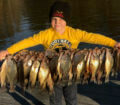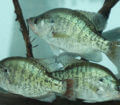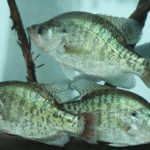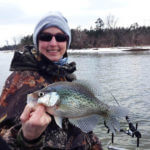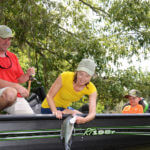Editor’s Note: How long has it been since you’ve enjoyed delicious-tasting fresh crappie? Are you sore from sitting in a tree stand from dawn until after dark chasing deer? Consider the possibility of taking your fishing boat to your hunting club this weekend and catching a mess of crappie in the middle of the day from 9:00 am to 2:00 pm. To find out why you should crappie fish at this time of year while everyone else is deer hunting, we talked with Jonathan Phillips of Team Phillips Guide Service (334-391-9735; [email protected]; https://www.facebook.com/jonathan.phillips.1675), who guides on the Alabama River, the Coosa River and Lake Jordan in central Alabama, but competitively fishes for crappie all across the South.
 Winter fishing is a sight game. You have to see the bite, instead of feeling the bite. For this reason you want to use a crappie rod that has a sensitive tip. I like ACC Crappie Stix (https://acccrappiestix.com/), light rods that have sensitive tips, but still have plenty of backbone in the lower ends of the rods.
Winter fishing is a sight game. You have to see the bite, instead of feeling the bite. For this reason you want to use a crappie rod that has a sensitive tip. I like ACC Crappie Stix (https://acccrappiestix.com/), light rods that have sensitive tips, but still have plenty of backbone in the lower ends of the rods.
Watching the tip of the rod is the real key to seeing the crappie crappie bite. One type of bite that’s hard for many people to spot is when the rod tip comes up, instead of going down. Often the crappie will take the jig or the minnow and be swimming up with it, causing your rod tip to come up. If your rod tip’s coming up, you also know you may be fishing a little bit higher in the water than where the crappie are holding, so you may want to fish deeper to put your baits right in the strike zone where the crappie are. I’ve learned from guiding that most people are expecting the rod tip to go down when they get a bite, so they don’t set the hook, and they miss the crappie. Many of those crappie will pick the baits up and go still in the water, so the rod tip may come up a little bit but not move any more.
In the late winter, typically when you find crappie on the Alabama River or others, the crappie will be in large schools and stay in one area for several weeks. Last winter, I had a 100-yard stretch on the Alabama River that was the only place I could find and catch crappie. I was able to run several guide trips on that same stretch of water, and the crappie stayed there. Once you locate crappie holding in an area like that, they’ll usually stay in the same area until there’s a weather change – either a warm front or a severe cold front. Later at the end of February, as the days get longer, the water has a longer time to heat up. So, when the crappie feel that change coming, they begin to move and go into a prespawn pattern.
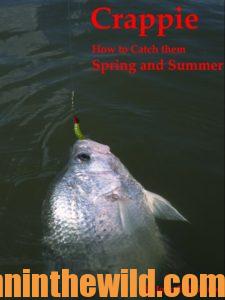
 To learn more about crappie fishing, check out John E. Phillips’ book, “Crappie: How to Catch Them Spring and Summer,” available in Kindle, in paperback and Audible versions at https://www.amazon.com/Crappie-Catch-Them-Spring-Summer/dp/0692221166. For a free eBook, “The Crappie Catcher’s Cookbook,” go to https://www.emailmeform.com/builder/form/eb81136oQJ1g2fe9q6RNd73jh.
To learn more about crappie fishing, check out John E. Phillips’ book, “Crappie: How to Catch Them Spring and Summer,” available in Kindle, in paperback and Audible versions at https://www.amazon.com/Crappie-Catch-Them-Spring-Summer/dp/0692221166. For a free eBook, “The Crappie Catcher’s Cookbook,” go to https://www.emailmeform.com/builder/form/eb81136oQJ1g2fe9q6RNd73jh.

